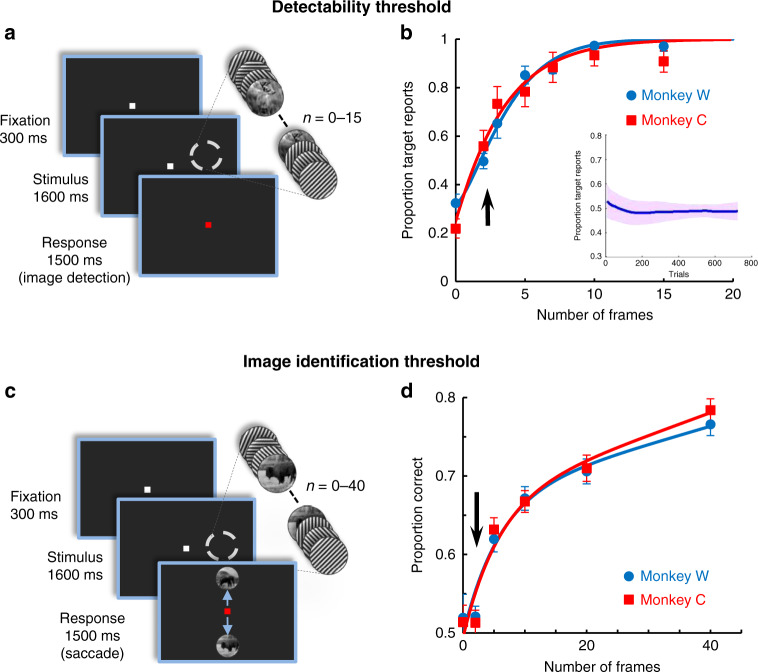Fig. 1. Behavioral experiments.
a Cartoon describing the image detection task—monkeys were trained to report whether a natural image is embedded into a 60-Hz movie stimulus (50% of trials did not contain the image). The image was flashed for 2–15 consecutive frames inserted at random times with respect to movie onset (total movie length: 96 frames, 1600-ms). b Psychometric curves for the image detection task represented as a function of the number of consecutive image frames. Detection threshold (calculated at d’ = 1) was 2.89 frames for monkey C and 3.28 frames for monkey W (n = 16, 6). Inset shows the average detection performance for the two-frame image condition as a function of trials (300 trials moving average, 10 ms step). c Cartoon describing the image identification task—one of two images, or no image in control trials, was randomly inserted into a movie stimulus (0–40 consecutive frames, same movie parameters as in a). Monkeys were required to identify the image by making a saccade toward one of the two scenes displayed after stimulus presentation. d Results of the image identification experiment represented as proportion correct saccades for stimuli containing between 0 and 40 image frames. Image identification performance for the two-frame stimuli was not different from chance (no image present in the movie; P = 1, P = 0.91, Wilcoxon sign-rank test, n = 20, 12). Error bars in all panels represent sem.

